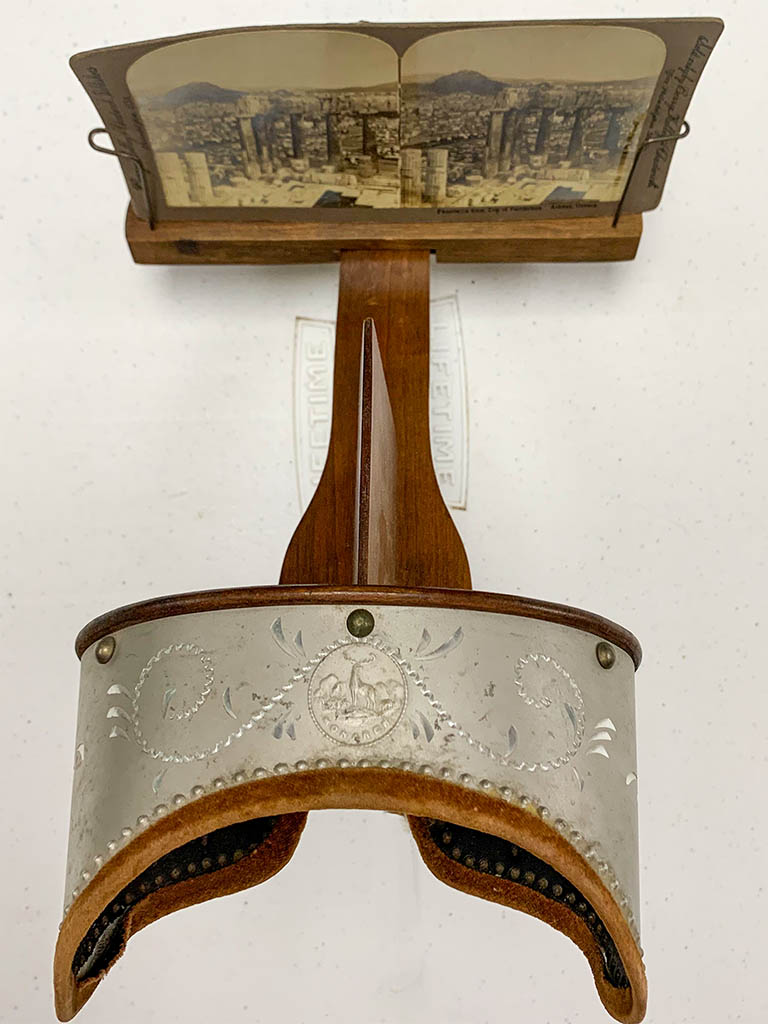
A Stereoscope is a device that is used to view a pair of photographs into a 3-dimensional image. Two identical images are photographed with an offset of 7 cm from each other, our eyes naturally combine the separate images into one and our brain processes that image in a 3-dimensional image.
Stereoscopic photography was considered more of a novelty in early photography. Taking a three dimensional setting into a perfect two dimensional photograph was the purpose of early photography. Turning that setting back into a three dimensional image seemed like a waste or a fad to many early photographers. However, the ability of being able to virtually visit places most people would never have the opportunity to travel to, gave the stereoscope and the stereograph cards a special place in Victorian homes across the world. At the Great Expedition of 1851 Queen Victoria was enamored with the refracting stereoscope and thus kicked off the stereoscope craze. The price of the stereoscope was cheap enough for it to be enjoyed by the middle and lower classes of people.
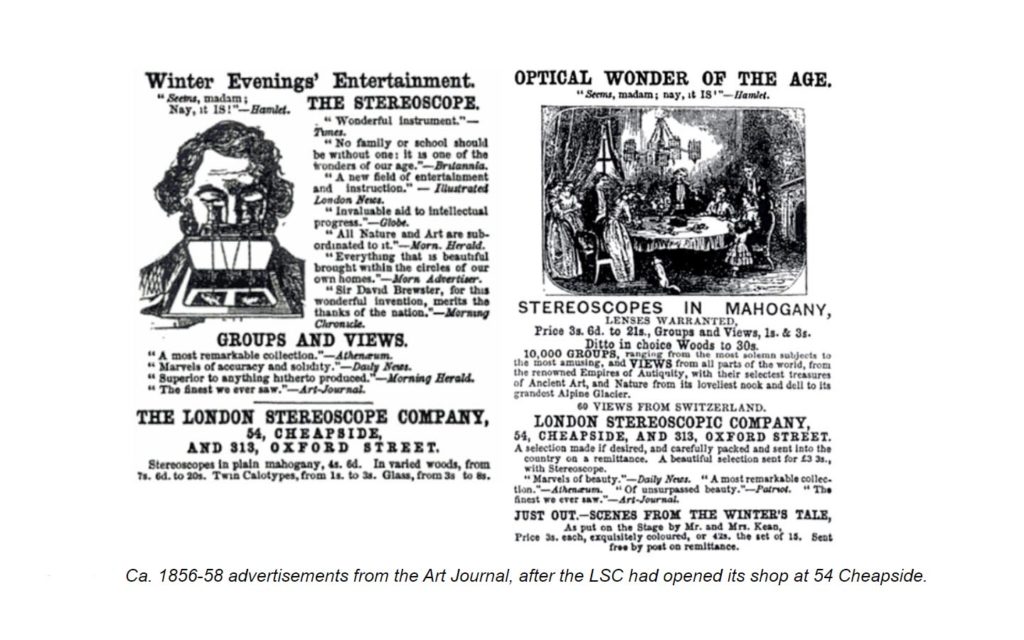
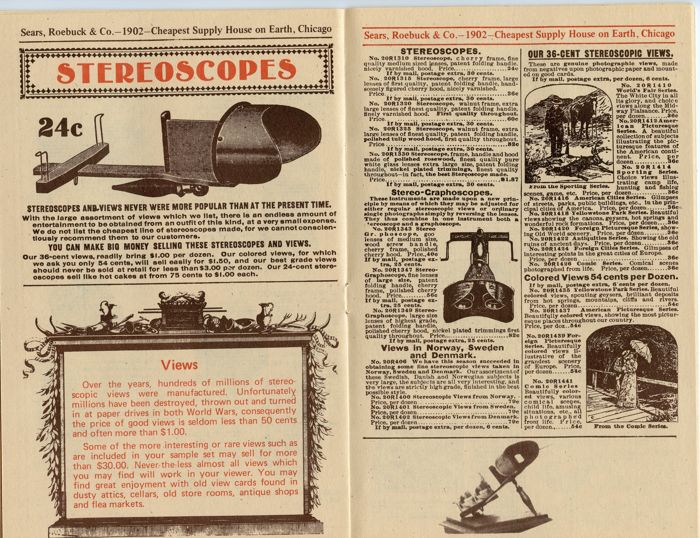
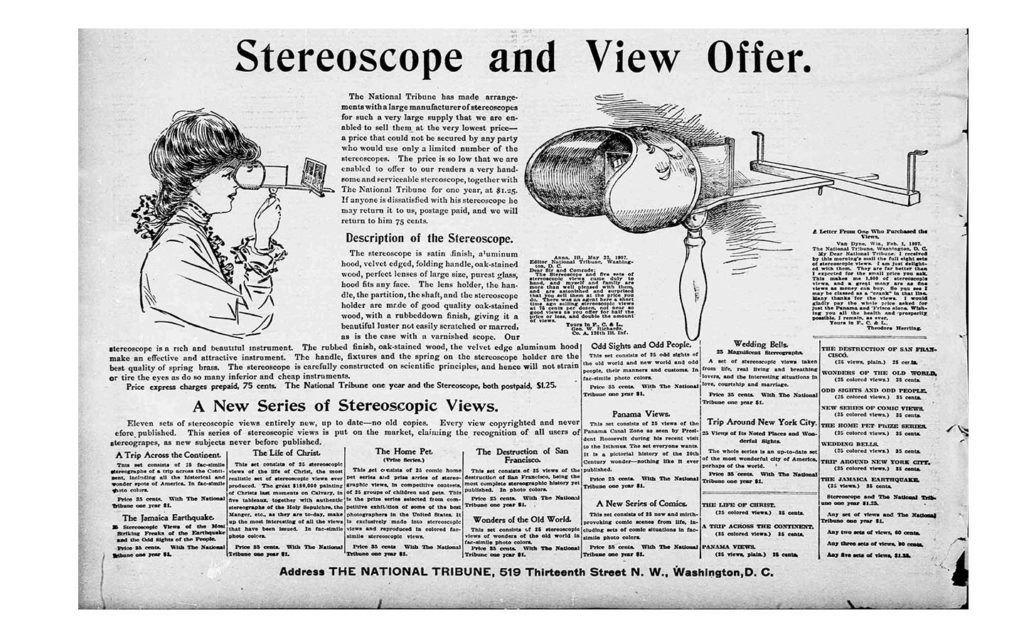
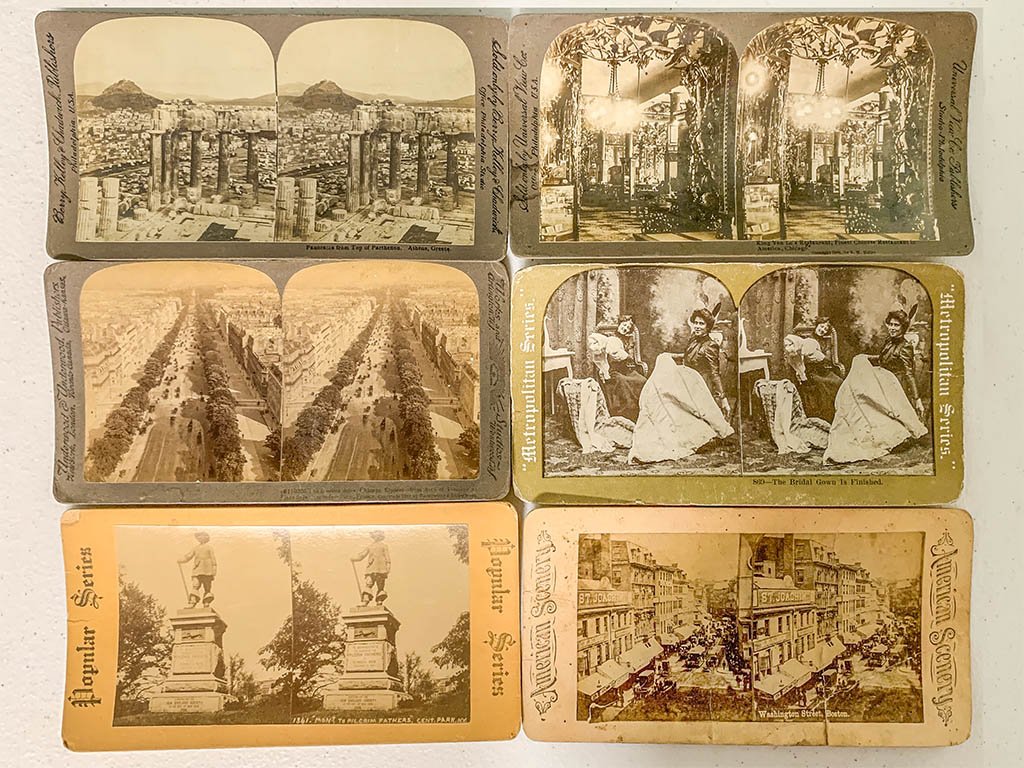
Early Stereoscopes had some design issues. Some people complained they could not focus well on the images, others complained of headaches and the stationary holders of early models did not aid those with vision issues. In 1861 Oliver Wendell Holmes and Joseph Bates designed the model most associated with stereoscopes. They did not patent their design leading to many different manufacturers over the years.
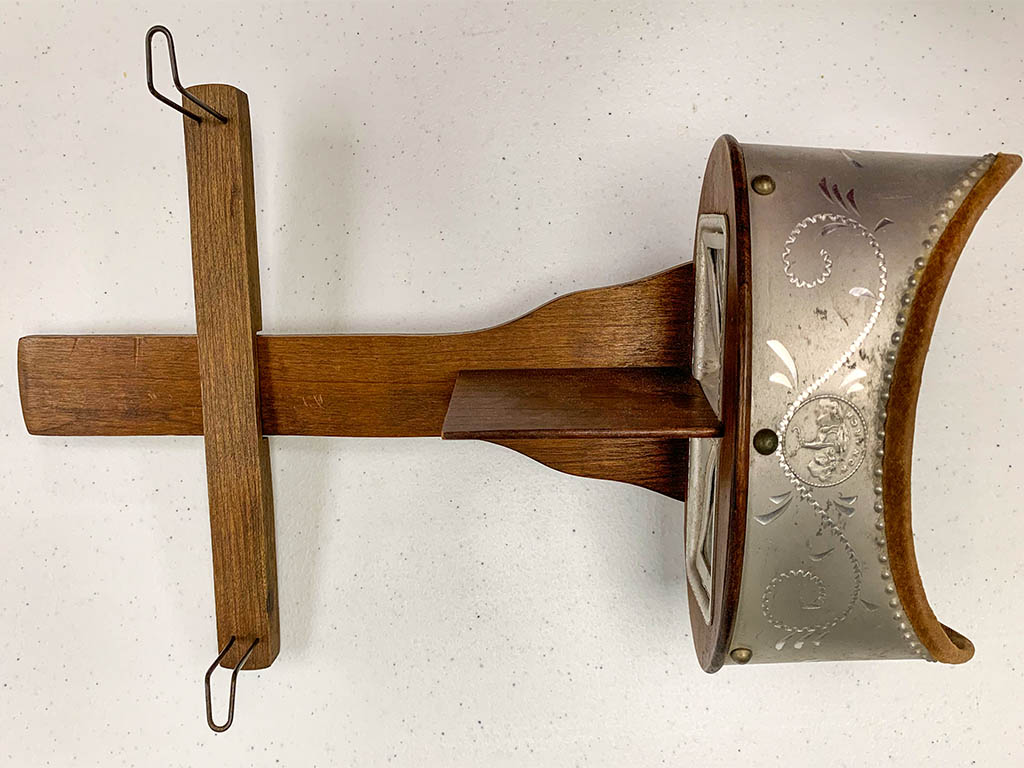
The stereoscope above is a Monarch produced by the Keystone View Company from about 1900-1910. The dimples on this particular model were to better secure the hood to the lens frame, give structure to the hood and a better visual appeal to the owner. It was owned by Jake and Mollie Sachse. The stereoscope along with the cards can be viewed as part of the museum collection. The boxed collection below was donated by Major Shepherd.
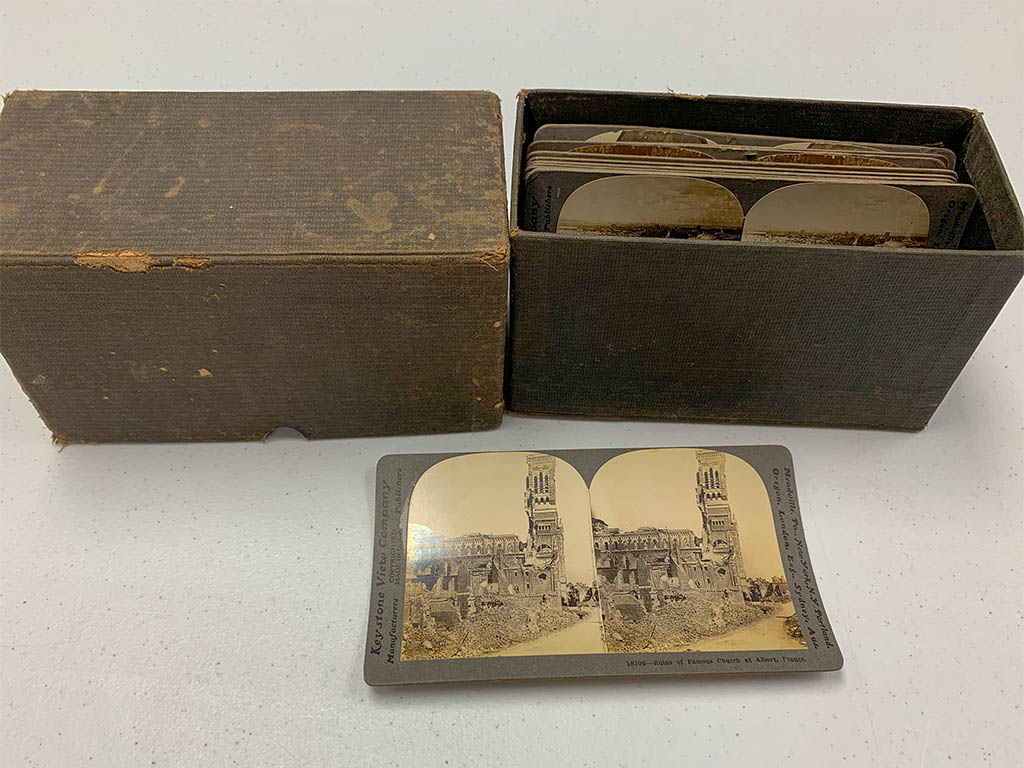
Keystone View Company was founded in 1892 by Benjamin Lloyd Singley. The company’s headquarters was in Meadville, Pennsylvania and originally sold only Mr. Singleys stereographs. However he quickly expanded hiring more photographers to capture exotic locations, rural America, and Native Americans.
Early popular sets were of Yellowstone Park, and views of Alaska during the Klondike Gold Rush. In the 1880’s Keystone purchased many of its competitors and their expansive inventories, making it the most prominent stereoscope company. Images from B.W. Kilburn, H.C. White and Underwood & Underwood would all be carried by the Keystone View Company. By 1905 Keystone was only distributor and had offices the Europe, Asia, Africa, North American and the Pacific. At the end of WWI Keystone was granted the rights to photograph battle fields and military bases greatly increasing its image collection. Keystone realized the value of using the images for educational purposes, thus classroom sets of stereograph cards were common through the 1930’s. Stereoscopes fell out of fashion as the film industry developed.

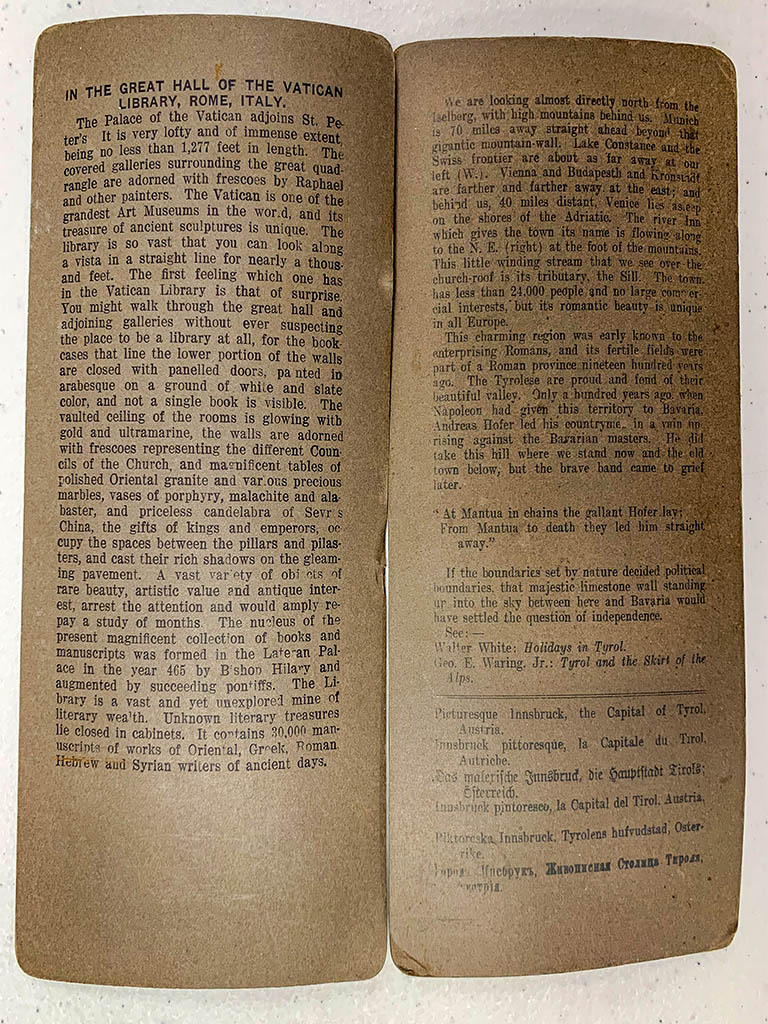
Stereograph cards with sharp images and detailed text were useful in a classroom setting for educational purposes.
However Stereoscopes have often made reappearances throughout the decades. Tru-Vue is an 1950’s era reboot with many card collections offering views of Greece, India, Canada, Portugal and many other countries. They also had an exclusive contract with Disney for a time producing filmstrips based on the characters. View-Master was very popular in the 1980’s and continues to be sold today, although often as a novelty item. The current most common type of this concept can be found in the modern VR systems. These Virtual Reality systems transport people to far off places, surrounding them in 360 panoramic views of locations from the comfort of their homes, much as the stereoscope brought the Pyramids of Egypt into the Victorian Homes of old.
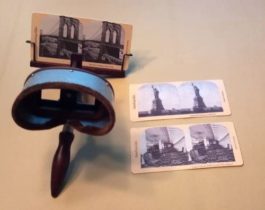
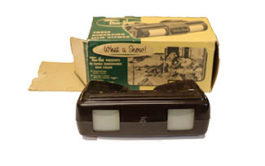
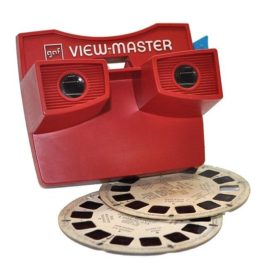
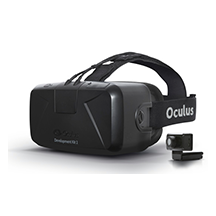
Sources: https://photofocus.com/photography/history-of-photography-stereoscopic-photography/; https://educators.mysticseaport.org/artifacts/stereoscope_mears/;http://historiccamera.com/cgi-bin/librarium2/pm.cgi?action=app_display&app=datasheet&app_id=3623; further detailed reading from 1859 https://www.google.com/books/edition/The_Photographic_news_ed_by_W_Crookes_Vo/DysFAAAAQAAJ?hl=en&gbpv=0; http://microscopist.net/LSC.html